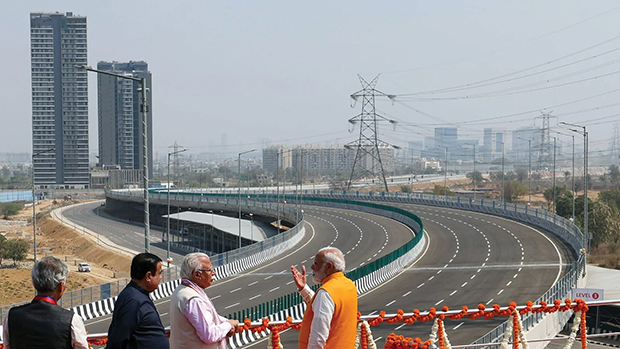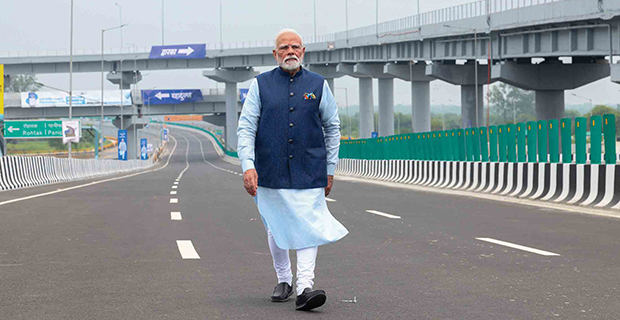Capital Roads Transformed
Two world-class highway projects reshape Delhi’s transport landscape.

The bypass of NH-48 Delhi–Gurugram Expressway includes an underpass near the airport and provides direct connectivity from IGI Airport to UER-II, Gurugram and Dwarka.
It provides a direct route to Yashobhoomi in Dwarka’s Sector 25 and will also provide multi-modal connectivity to Delhi Metro’s Blue and Orange Lines, the upcoming Bijwasan railway station and Dwarka cluster bus depot.
The construction of the Dwarka Expressway has already reduced travel time for areas in the capital, such as Dwarka, Mahipalpur, Vasant Kunj and Najafgarh, enhancing connectivity to Gurugram and key locations like IGI Airport.
The Delhi section comprises two stretches: 5.9 km from Shiv Murti intersection near the airport to Dwarka Sector 21, and 4.2 km from Sector 21 to the Delhi–Haryana border. The route includes a tunnel to ensure uninterrupted traffic flow.
The 19 km Haryana section of the Dwarka Expressway was inaugurated by the Prime Minister on March 11, 2024. The complete 28 km corridor was constructed at ?8,611 crore.
Construction has incorporated environmental initiatives, with two million tonnes of waste from the Ghazipur landfill used in UER-II development, reducing the height of the waste mountain by seven metres.
Union Minister Gadkari highlighted this during the Delhi Assembly election campaigning earlier this year. “We are using inert materials recovered through biomining of legacy waste for highway construction to promote sustainable infrastructure,” an NHAI official said.
“These inert materials, such as soil, silt, stones and construction debris, are stable and suitable for embankment filling, subgrade layering and service roads,” the official added.
The inert material is also being used for other projects, including the DND–Faridabad Ballabgarh Sohna bypass, aimed at reducing landfill volume, conserving natural resources and lowering construction costs and carbon emissions.
Delhi Chief Minister Rekha Gupta, along with senior officials and party leaders, visited the inauguration site on Saturday to review the preparations and issued necessary instructions. She described the projects as a “historic gift” for the city.
“The commencement of UER-II will play a vital role in reducing congestion, improving the industrial corridor network, lowering vehicular pollution and thereby contributing to a cleaner and healthier environment,” Gupta said.
“UER-II is not just an infrastructure project; it is an investment in the future of Delhi. It will improve traffic flow, cut travel time drastically, and uplift the quality of life for lakhs of people living in Delhi and NCR,” she added.
She also emphasised the long-distance connectivity that UER-II will bring, saying the route will integrate with the Delhi–Jaipur national highway, KMP Expressway and Gurugram–Sohna Highway, which connects to the Delhi–Mumbai Expressway.
“Travel to Chandigarh, Punjab, Jammu and Kashmir, Jaipur, and even Mumbai will become faster and more convenient. It is truly a transformative project,” she added.
“With this network, UER-II will emerge as a backbone of high-speed connectivity, linking Delhi not just with NCR but with the entire nation,” CM Gupta said.
The projects are part of the government’s broader plan to decongest the national capital, though transport experts have previously questioned whether new roads provide lasting relief or simply shift bottlenecks to other locations.











Comments.